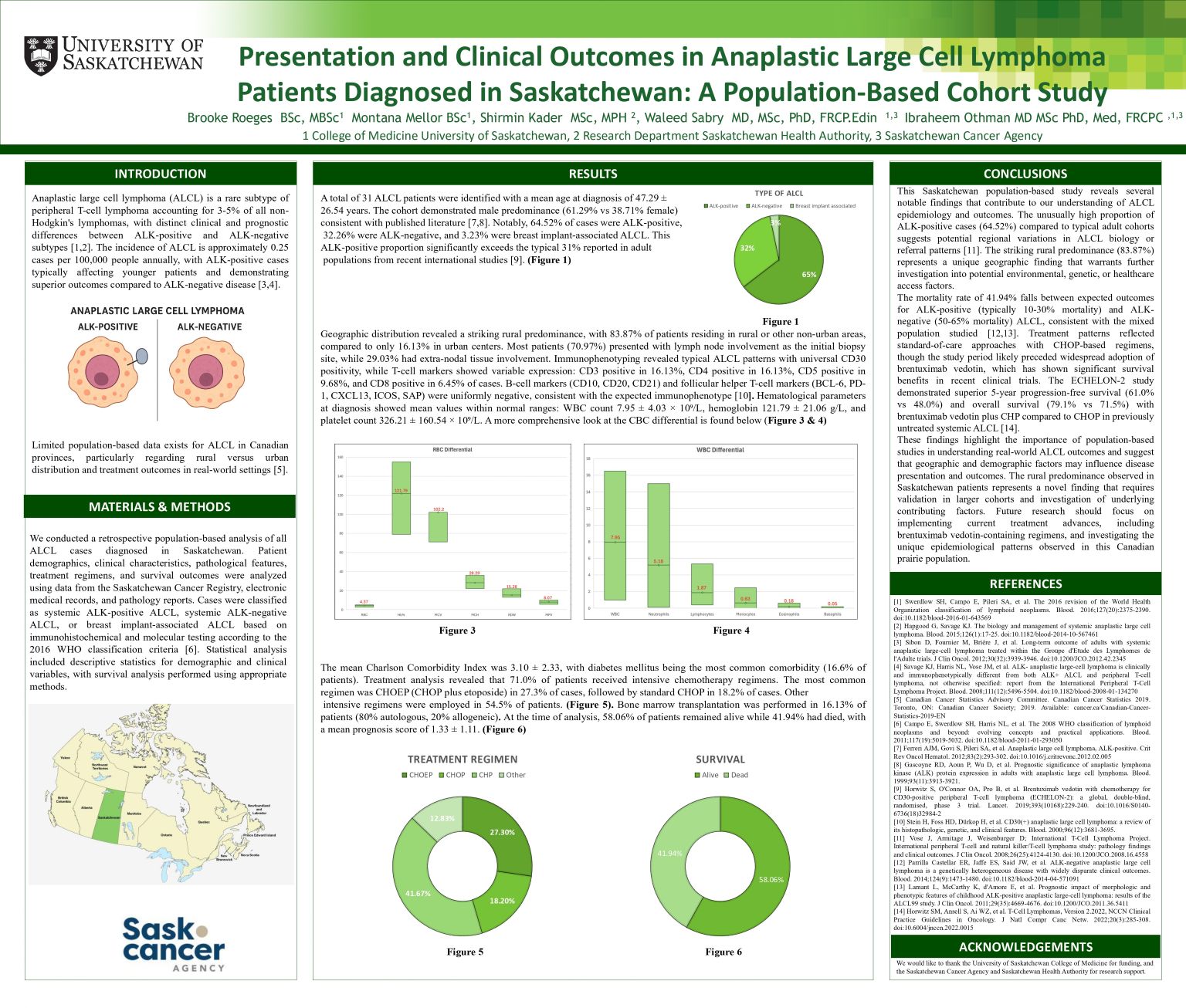
Presentation and Clinical Outcomes in Anaplastic Large Cell Lymphoma Patients Diagnosed in Saskatchewan: A Population‐Based Cohort Study
Brooke Roeges
Background: Anaplastic large cell lymphoma (ALCL) is a rare subtype of T-cell lymphoma accounting for 3-5% of all non-Hodgkin's lymphomas. Limited data exists for ALCL in Canadian provinces, particularly regarding rural versus urban distribution and treatment outcomes.
Methods: We conducted a retrospective population-based analysis of ALCL cases diagnosed in Saskatchewan, analyzing patient demographics, clinical characteristics, pathology, treatments, and survival.
Results: A total of 31 ALCL patients were identified, with 64.52% of cases being ALK-positive, exceeding the 31% reported in adult populations from recent international studies. Geographic distribution revealed a rural predominance, with 83.87% of patients residing in rural or other non-urban areas. Treatment analysis revealed that 71.0% of patients received intensive chemotherapy regimens, most commonly CHOEP (CHOP plus etoposide) in 27.3% of cases, followed by CHOP in 18.2%. Bone marrow transplantation was performed in 16.13% of patients, and at the time of analysis, 58.06% of patients remained alive while 41.94% had died.
Conclusion: Overall, the high proportion of ALK-positive cases (64.52%) compared to typical adult cohorts suggests potential regional variations in ALCL biology or referral patterns, while the striking rural predominance (83.87%) represents a unique geographic finding that warrants further investigation into potential environmental, genetic, or healthcare access factors.
